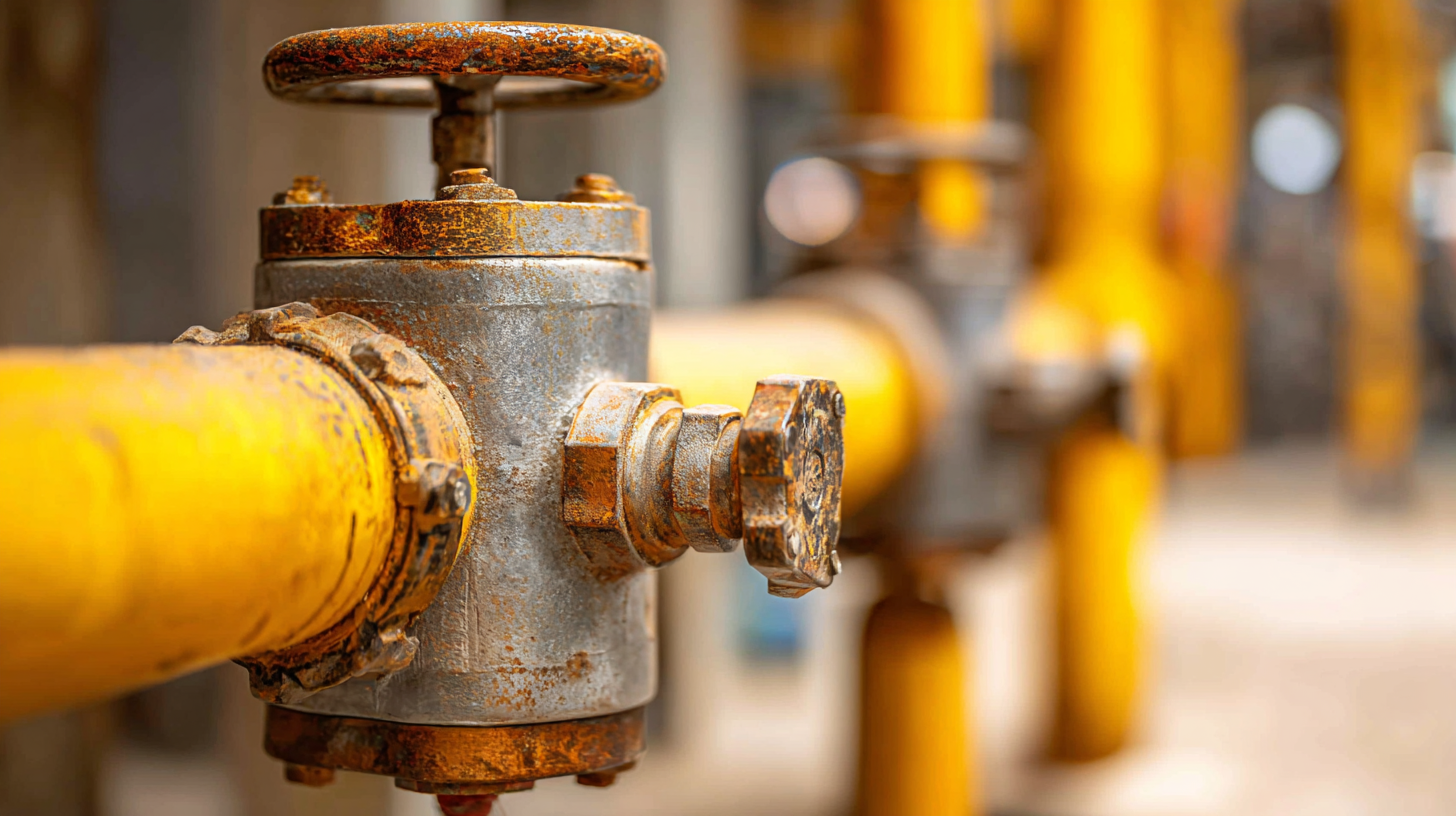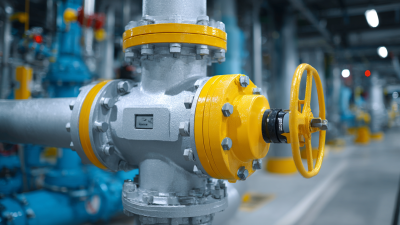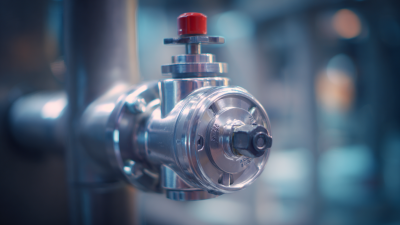Understanding the Importance of Safety Relief Valves in Industrial Applications: A Comprehensive Guide
In industrial applications, the safety relief valve plays a critical role in protecting equipment and personnel from the potential hazards of overpressure. According to a recent report by the Occupational Safety and Health Administration (OSHA), improper handling of pressure relief systems can lead to catastrophic failures, resulting in significant financial losses—estimated at over $1 billion annually due to unplanned downtime and accidents. The American Society of Mechanical Engineers (ASME) emphasizes that effective safety relief valves can mitigate these risks by ensuring that pressure levels remain within safe operating limits.

As industries strive for greater efficiency and safety, understanding the importance and functionality of safety relief valves becomes paramount. This comprehensive guide aims to illuminate the essential aspects of safety relief valves, exploring their design, types, and best practices to ensure optimal performance in various industrial environments.
Overview of Safety Relief Valves and Their Functions in Industrial Settings
Safety relief valves (SRVs) play a critical role in maintaining safety within industrial settings, serving as a primary line of defense against pressure build-up in equipment. According to the American Society of Mechanical Engineers (ASME), improperly functioning SRVs can lead to catastrophic failures, resulting in substantial economic losses estimated at over $20 billion annually in the process industries. These valves are designed to open automatically when pressure exceeds predetermined limits, thereby preventing potential explosions, equipment damage, and worker injuries.
In various sectors, including oil and gas, chemical manufacturing, and power generation, the functionality of safety relief valves is crucial. A report from the National Board of Boiler and Pressure Vessel Inspectors highlights that nearly 30% of boiler-related incidents are linked to SRV malfunctions. Regular testing and maintenance of these valves are essential, as manufacturers recommend that SRVs be inspected at least once a year to ensure they operate correctly under high-stress conditions. The implementation of a robust safety management system can enhance the reliability of safety relief valves, ultimately safeguarding both personnel and assets in industrial operations.
Key Design Features of Safety Relief Valves for Enhanced Performance
Safety relief valves are critical components in industrial applications, designed to prevent excessive pressure buildup that can lead to catastrophic failures. The design features of safety relief valves significantly affect their performance and reliability. High-quality materials, such as stainless steel or special alloys, ensure durability and resistance to corrosion, while precise manufacturing tolerances contribute to optimal functionality. According to a report by the American Society of Mechanical Engineers (ASME), approximately 40% of industrial accidents are linked to pressure-related failures, underscoring the necessity of effective relief systems.
To enhance performance, safety relief valves should include features such as blowdown adjustment, which allows for control of the pressure drop after operation, ensuring quicker recovery and readiness for subsequent pressure fluctuations. Moreover, a reliable sealing mechanism minimizes leakage, maintaining system integrity. Industry data suggests that incorporating advanced technology, like digital monitoring systems, can improve the maintenance and operational efficiency of these valves by up to 30%.
Tips: Regular maintenance and testing of safety relief valves are crucial in ensuring their performance. Consider creating a maintenance schedule based on the manufacturer's recommendations to avoid unexpected failures. Additionally, training operators on the importance of these components can greatly enhance safety awareness in the workplace.
Importance of Safety Relief Valves in Industrial Applications
Common Applications of Safety Relief Valves Across Various Industries
Safety relief valves are critical components in various industrial applications, serving to prevent equipment failure and hazardous situations. These valves are widely used across industries such as oil and gas, chemical manufacturing, and pharmaceuticals. According to a report by Research and Markets, the global safety relief valves market is projected to grow at a CAGR of 5.2% from 2021 to 2026, reflecting their increasing importance in ensuring safety and compliance within industrial operations.
 In the chemical processing industry, safety relief valves are vital for managing pressure in storage tanks and pipelines. A malfunction in this equipment could lead to catastrophic leaks or explosions. Meanwhile, in the oil and gas sector, these valves protect equipment from overpressure during various stages of extraction and refining. A study by the American Petroleum Institute underscores that proper maintenance of safety relief valves can reduce incidents by over 30%, emphasizing their role in operational safety.
In the chemical processing industry, safety relief valves are vital for managing pressure in storage tanks and pipelines. A malfunction in this equipment could lead to catastrophic leaks or explosions. Meanwhile, in the oil and gas sector, these valves protect equipment from overpressure during various stages of extraction and refining. A study by the American Petroleum Institute underscores that proper maintenance of safety relief valves can reduce incidents by over 30%, emphasizing their role in operational safety.
Tips: Regular inspection and maintenance of safety relief valves are essential to ensure their proper functioning. Implement a scheduled maintenance program to check for leaks, corrosion, or other signs of wear. Additionally, educate your staff on the importance of these valves and the protocols for addressing any issues that may arise.
Best Practices for Maintenance and Inspection of Safety Relief Valves
Regular maintenance and inspection of safety relief valves are critical to ensuring their efficiency and reliability in industrial applications. These valves are designed to prevent excessive pressure buildup, which can lead to catastrophic failures if not properly maintained. A best practice involves conducting routine visual inspections to check for signs of corrosion, leaks, or blockages. Operators should also verify the valve's operational functionality under simulated pressure conditions to confirm that it opens and closes as intended.
In addition to visual inspections, a comprehensive maintenance schedule should include periodic testing and calibration of safety relief valves. This can involve disassembly for cleaning and replacing worn or damaged components. Keeping detailed records of inspections and maintenance activities is vital to track the valve's performance history and ensure compliance with industry regulations. By adhering to these best practices, facilities can enhance the reliability of their safety relief systems, minimizing the risk of pressure-related incidents and ensuring a safer working environment.
Understanding the Importance of Safety Relief Valves in Industrial Applications: A Comprehensive Guide - Best Practices for Maintenance and Inspection of Safety Relief Valves
| Dimension | Value | Importance |
|---|---|---|
| Set Pressure (PSI) | 150 | Determines when the valve opens to relieve pressure |
| Material | Stainless Steel | Resistant to corrosion and high temperatures |
| Orifice Diameter (inches) | 2.5 | Influences flow capacity and efficiency |
| Inspection Frequency | Annually | Ensures reliability and compliance with safety standards |
| Testing Method | Hydrostatic Test | Verifies the integrity under pressure |
| Common Failure Mode | Sticking | Can cause overpressure and system failure |
Regulatory Standards Governing the Use of Safety Relief Valves in Industry
Safety relief valves play a critical role in ensuring the safe operation of various industrial processes by protecting equipment and personnel from excessive pressure situations. Regulatory standards governing their use vary by region and industry, with organizations like the American Society of Mechanical Engineers (ASME) and the Occupational Safety and Health Administration (OSHA) setting forth guidelines that ensure these valves are appropriately designed, installed, and maintained. Compliance with these regulations not only enhances workplace safety but also minimizes the risk of costly incidents that can arise from pressure failures.

Moreover, understanding these regulatory frameworks is essential for industry professionals tasked with process safety management. Regulations typically specify the types of materials, testing procedures, and installation practices to be followed when implementing safety relief systems. Adhering to these standards helps organizations avoid legal repercussions and fosters a culture of safety within the workplace. Regular inspections and maintenance, as mandated by these regulations, further ensure that safety relief valves function correctly over time, providing a reliable means of pressure control in various applications, from chemical manufacturing to power generation.
Related Posts
-

Maximizing Safety: The Essential Guide to Temperature and Pressure Relief Valve Maintenance
-

Understanding the Importance of Relief Valves in Industrial Applications
-

Understanding the Role of Temperature and Pressure Relief Valves: Key Data and Insights for Safety Compliance
-

Unlocking Efficiency: A Comprehensive Guide to Hydraulic Relief Valve Performance Metrics in Industrial Applications
